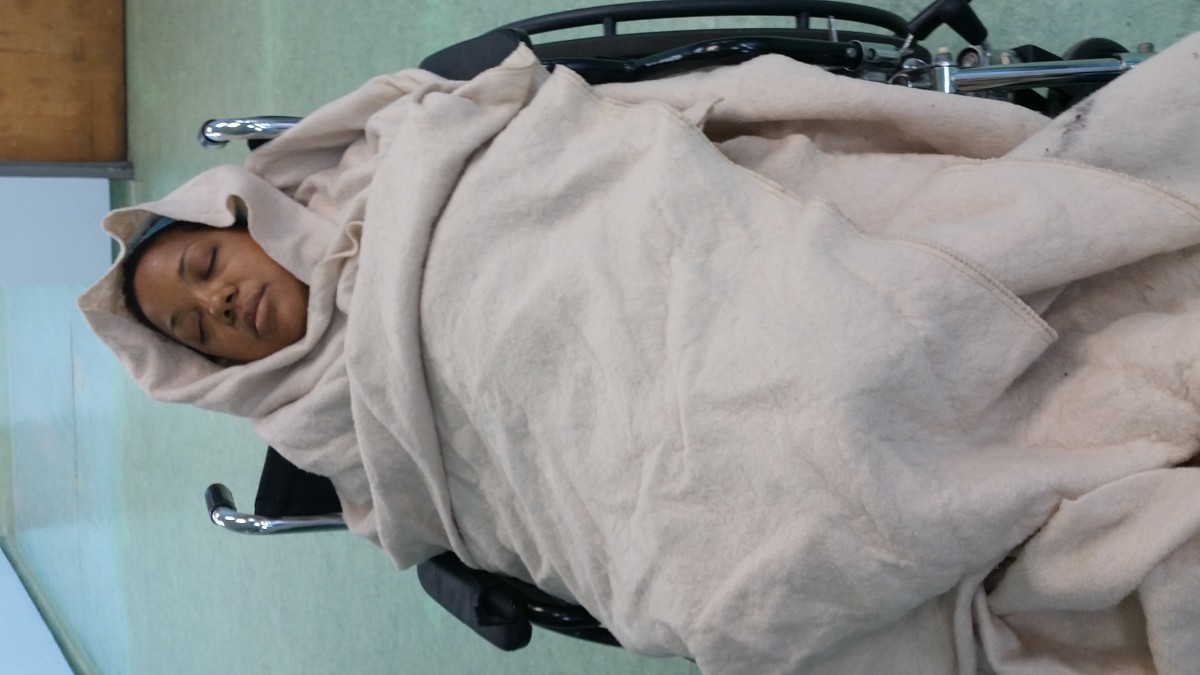When I walked to Nurse Sears’ office I passed the entrance to the dialysis treatment room; it was the picture of a human factory: Rows of machines with people lying on beds hooked up by tubes; nurses bustling about plugging in and unplugging patients; everything in motion like an assembly line. As one bed became free it was cleaned and a new patient ushered in, a non stop routine, morning, afternoon and night. Visitors aren’t allowed in the treatment room because it has to be sterile. The view of the factory came like a flash. When it left, only the anticipation remained that at some point it would be me they ushered in to be hooked up. The anticipation was dreadful.
Fortunately, I was barely conscious for my first dialysis treatment. I just know I survived it. Still under trance from the anesthesia, they wheeled me straight from the operating room to the Dialysis Unit at the Princess Margaret Hospital (PMH). All I remember is being cold, freezing cold. I kept asking for more blankets, more blankets, stuttering my request through the cold and the sleepiness. I wanted to be completely swaddled so the little pockets of cold air could no longer seep in through my feet, my back, and my head. But no number of blankets could satisfy the chills I felt. Sleep. I just wanted sleep to come and numb the cold.
Throughout it all I was mainly in a daze, while waiting to have my catheter x-rayed; waiting for the doctor to okay the x-ray and communicate with the nurses; waiting in line for my turn at the Dialysis Unit. I had given pre-consent to start dialysis immediately after my surgery, so although I was barely conscious, my mummy and the medical team wheeled me through the motions like a bundled up caterpillar waiting to be transformed.
The next day I was wide awake. My left arm was locked at a ninety degree angle from the surgery on the inside crease of my elbow. My neck was frozen forward from the surgery on my right shoulder bone area. I was sore and in pain, sad and scared. I had to go back for dialysis, but this time I wouldn’t have the comfort of post-anesthesia oblivion.
I had to walk the slightly inclined walkway at the back of the hospital, behind the morgue, fully conscious. I had to answer to the security guard posted by the entrance, fully conscious. When strange people pass, the security guard on duty asks, where are you going? The entrance to dialysis is the exit for the southern patient wards, so only dialysis patients get a pass. I was fully conscious when I saw the shabby waiting room that would be my new office, three days a week. I was fully conscious when I saw the room filled with strange faces, patients who would later become my encouragement and inspiration. On my first conscious day, however, everything and everyone distressed and intimidated me.
I didn’t know what to do. I didn’t know I had to write my name on a patient list. I didn’t know I had to weigh myself on the patient scale. I didn’t know it was first come first serve. I didn’t know I was on the 4pm shift. I didn’t know you had to wait hours sometimes for treatment.
The best thing that happened to me was Nurse Sears. My doctor had given me her name several weeks prior, but I never called her: Another one of my avoidance tactics. She recognized me when she heard my name. After chastising me for not calling, she scooped me up and carted me off to a back room.
The original assignment to see Nurse Sears was really about investigating a type of dialysis (peritoneal dialysis) that she manages in the unit. However, none of that was truly on my mind. I was only relieved to be in the safety of solitude, behind a door, away from all of the things and the people I didn’t know.
Nurse Sears saw me trying to hold back the tears welling up in my eyes. I had submitted myself to this journey, but it was still a frightful time. I wanted to be open. I wanted to be strong. I wanted to be trusting, but my tears were a sign of my fear. In her presence they flowed safely. She talked me through a few questions, each time having to wait patiently as I composed myself enough to utter a sentence. This wasn’t the standard orientation (although it should be), but it was exactly what I needed to arrest my anxiety.
When it was my turn the nurses called for Nicolls. I stepped into the factory, quietly observing everything.

